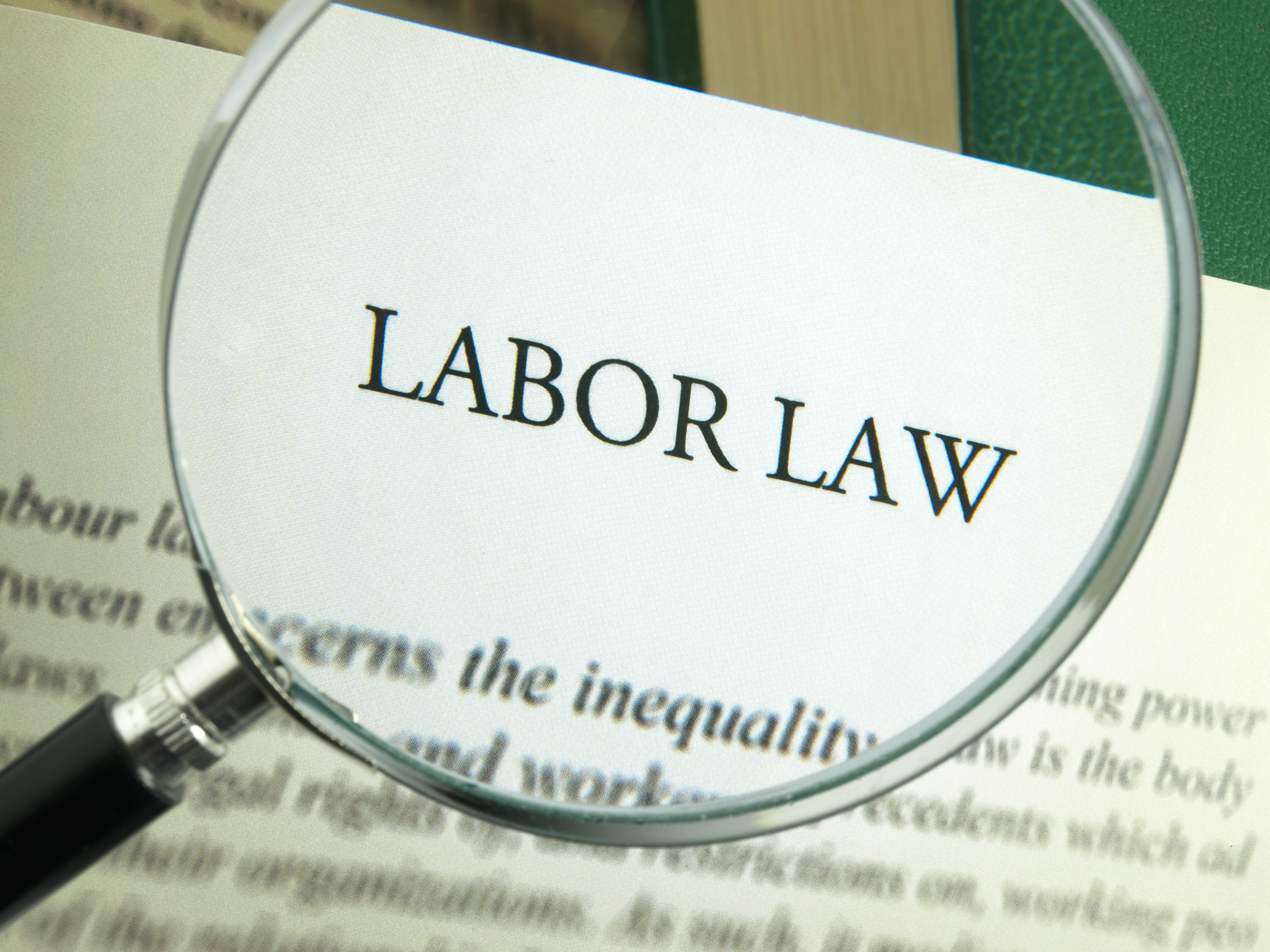Compliance officers – who are used to monitoring the Securities and Exchange Commission, Department of Justice or specific agencies relevant to their industries – may want to turn their focus to the Supreme Court in 2014 because the justices will decide a number of labor and employment cases that could impact compliance.
In 2014, regulatory agencies and lower courts may also provide important guidance on whistleblowers under both Sarbanes-Oxley and Dodd-Frank, and wage and hour issues too. However, they are not likely to provide any clarity on hot topics such as bullying, which has dominated the news, or worker misclassification. Worker misclassification has always been a federal priority, but now it has reinforcement from state governments, which have agreed to assist the Department of Labor (DOL) in auditing employers. Accordingly, compliance officers may want to work closely with their colleagues in the Human Resources department and/or the employment
law groups to stay abreast of these developments.
A Busy Year for the Supreme Court
Last term, the United States Supreme Court decided two cases in favor of employers. Under current precedent, if a supervisor who has sexually or racially harassed an employee takes an adverse action against that employee such as termination or demotion, the employer is held strictly liable for that action. For an employer to be held liable for co-worker harassment, however, the employer merely has to be negligent in stopping the behavior. In Vance v. Ball State, a case closely watched by the employer community last term, the Supreme Court rejected the Equal Employment Opportunity Commission’s position that co-workers could be deemed supervisors in harassment cases if they had the ability to direct the employee’s daily work activities. Instead, the Court found the EEOC’s standard too ambiguous and ruled that “the ability to direct another employee’s tasks is simply not sufficient” to deem someone a supervisor. Instead, the Court held that an employee is a “supervisor” under Title VII only if he is empowered by the employer to take tangible employment actions against the alleged victim. The dissent called for Congress to take action to remedy the perceived wrongs in the majority’s decision.
In another case, University of Texas Southwestern Medical Center v. Nassar, the Court made it clear that plaintiffs in retaliation cases have a higher burden than in traditional employment law cases, where employers can be held liable if wrongful discrimination is a motivating factor. Under Nassar, a plaintiff must now prove that retaliation was a determinative standard, not just a motivating factor in an adverse action. Justice Ginsburg, who wrote the dissent in Vance as well, also dissented in Nassar, arguing that the majority was “driven by a zeal to reduce the number of retaliation claims filed against employers.” She once again called for Congressional action similar to the Civil Rights Restoration Act of 1987, which overturned a number of controversial Supreme Court rulings from the 1980s. Compliance officers should watch these developments closely. If Congress does take up Justice Ginsburg’s challenge, employers may face an uptick in harassment and retaliation cases.
In January 2014, the Court ruled unanimously in Sandifer v. U.S. Steel Corporation that the time employees spend “donning and doffing” their protective gear is not compensable under the Fair Labor Standards Act, 29 U. S. C. § 203(o). Pursuant to the collective bargaining agreement at issue in this case, employees were not paid for time spent putting on or taking off protective clothing in the locker room, and they were not paid for travel from the locker room to their workstations. The plaintiffs claimed that despite the terms of their collective bargaining agreement, they should have been paid for time spent changing into their hard hats, gloves, steel-toed boots and flame-retardant suits.
Under § 203(o) of the Fair Labor Standards Act, employers do not need to compensate employees for changing clothes at work if it is considered “non-work time” under the terms of their collective bargaining agreement. The clothing at issue included earplugs and goggles, which the Seventh Circuit found took so little time as to be considered de minimis. The DOL issued a 2010 Administrator’s Interpretation and argued before the Seventh Circuit in 2012 that protective gear are not “clothes,” in both cases rejecting its own prior DOL guidance that took the opposite position. The Solicitor General then supported U.S. Steel and advocated for a middle ground position. The Court upheld the Seventh Circuit’s decision using the ordinary meaning of “clothes,” concluding that almost everything that workers donned and doffed other than earplugs and safety glasses fit that definition.
In March 2014, the Court dramatically expanded the universe of potential whistleblower plaintiffs to include subcontractors and employees who work for privately held companies that contract with public companies. In 2002, Congress enacted Sarbanes-Oxley, and the whistleblower protection provisions contain civil and criminal penalties. The law clearly protects whistleblowers who work for publicly held companies, and courts have generally ruled against employees who work for privately held firms. But the Department of Labor’s Administrative Review Board has ruled that contractors at public companies enjoy whistleblower protection as well. The plaintiffs in Lawson v. FMR LLC did not work for Fidelity, but were contracted to provide advice to Fidelity Mutual Fund customers. The plaintiffs voiced concerns to management regarding problems with cost-accounting methodologies and the alleged improper retention of millions of dollars in fees. The Court ruled that employees of private contractors who do work for companies subject to SOX also enjoy the law’s protection. Now SOX protection extends to potentially millions more employees. While many private firms have compliance programs and anti-retaliation policies already, those that do not should pay close attention to this development.
In the 2013-2014 term, the Court will also rule on the President’s ability to make recess appointments to the National Labor Relations Board.
In a closely watched, politically charged case, NLRB v. Noel Canning, the Court will rule on President Obama’s recess appointments to the National Labor Relations Board. At issue is whether any decisions by the NLRB can be valid if the commissioners were not legally appointed, as the D.C. Circuit ruled. If the Supreme Court upholds that opinion, over 200 NLRB cases decided over the past year could be invalidated.
Whistle While You Work
Compliance officers have probably been paying close attention to the Dodd-Frank whistleblower rule, which allows the recovery of between 10 and 30 percent of any monetary award of more than $1 million in any SEC enforcement action for those whistleblowers who provide original information to the SEC.1 However, who exactly is a whistleblower? The SEC has stated that a person can claim the reward after making an internal complaint before coming to the agency, and a few federal district courts have agreed. But other courts have ruled to the contrary, stating that only those individuals who provide information to the SEC are considered whistleblowers under the rule. There is currently a split between the Fifth and Tenth Circuits and several district courts. Perhaps the Supreme Court will take up the Dodd-Frank whistleblower issue in a future term.
The SEC announced that in 2013 it awarded $14,831,965.64 during its fiscal year to four whistleblowers based on 3,238 tips. Most of the money—more than $14 million—went to a single individual. The top three allegations involved corporate disclosures and financials (17.2 percent), offering fraud (17.1 percent) and manipulation (16.2 percent). Citizens from California, New York, Florida and Texas (in that order) provided the most tips, but complaints came in from 55 countries and all 50 states. Employers with operations in the UK, Canada, and China should ensure that their compliance programs are strong, as most international tips came from those countries. Of note, a federal judge in New York ruled that Dodd-Frank whistleblower protection does not extend to acts committed outside U.S. borders. Another court has ruled that Dodd-Frank does not entitle whistleblowers to a jury trial.
Workplace Bullying
This fall, even non-sports fans couldn’t escape the scandal surrounding Miami Dolphins football players Richie Incognito and Jonathan Martin. Incognito allegedly used racial slurs and threatened his fellow offensive lineman on voicemail and Twitter. The issue sharply divided observers as to whether bullying could occur in a locker room among 300-pound men, but the conversation led to broader discussions about bullying in the workplace. Many people were surprised to learn that although two dozen states have proposed workplace bullying laws based on the proposed Healthy Workplace Act, none have passed as of the time of this writing. Nonetheless, the attendant negative publicity, allegations of harassment, loss of morale and/or workplace violence that companies can face should remind compliance officers of potential legal or company policy violations that can arise, even without anti-bullying laws in effect.
A Busy Regulatory Agenda—The Department of Labor
According to NERA Economic Consulting, in the first three quarters of 2013, 51 cases settled for a total of approximately $215 million. Each employer paid an average of $4.5 million to resolve its wage and hour case in 2013 (less than in 2012), and the average settlement value per person rose to $7,000. In 2013, more than half of the class action suits had fewer than 1,000 plaintiffs. Almost 50 percent of the wage and hour litigation arose out of California, with New York coming in second with 17.2 percent of the cases, down from 40.6 percent in 2012. Forty-five percent of cases related to allegations of unpaid overtime. It is possible that more proactive compliance audits and corrective actions led to lower settlement amounts.
In addition to the FLSA and SOX matters discussed above, the DOL focused in 2013 – and will continue to focus in 2014 – on unpaid interns and worker misclassification. Although the economy shows signs of improvement, a number of Americans remain out of work and take unpaid internships to get their feet in the door of companies. Accordingly, a number of employers have faced lawsuits from unpaid interns in a variety of industries, and although the Supreme Court refused to review a case this term, it may do so at some point soon. The DOL applies six criteria to determine whether interns must be paid:
- The internship, even though it includes actual operation of the employer’s facilities, is similar to training that would be given in an educational environment.
- The internship experience is for the benefit of the intern.
- The intern does not displace regular employees, but works under close supervision of existing staff.
- The employer that provides the training derives no immediate advantage from the activities of the intern, and on occasion its operations may actually be impeded.
- The intern is not necessarily entitled to a job at the conclusion of the internship.
- The employer and the intern understand that the intern is not entitled to wages for the time spent in the internship.2
Due to continued press exposure and the agreement by the Second Circuit Court of Appeals to take on some high-profile cases, those employers who use interns should ensure that they comply with these requirements.
As reported in last year’s LRN Risk Forecast Report, worker misclassification is another DOL priority. Fifteen states now work with the DOL on the 2011 Misclassification Initiative to ensure that workers are not erroneously characterized as independent contractors and thus not provided family medical leave benefits, minimum wage, unemployment benefits and proper wages. Further, misclassification denies states the proper taxes from employers.
What does this mean for compliance?
Even if compliance officers do not have direct responsibility for labor and employment matters, it behooves them to work closely with their colleagues who do. The best way to prevent liability is through training, prevention, monitoring and auditing, and no one knows how to do that better than ethics and compliance experts.
The full LRN Risk Forecast Report can be accessed at: http://pages.lrn.com/risk-forecast-report-2014
Footnotes
1 http://www.sec.gov/whistleblower
2 http://www.dol.gov/whd/regs/compliance/whdfs71.pdf














